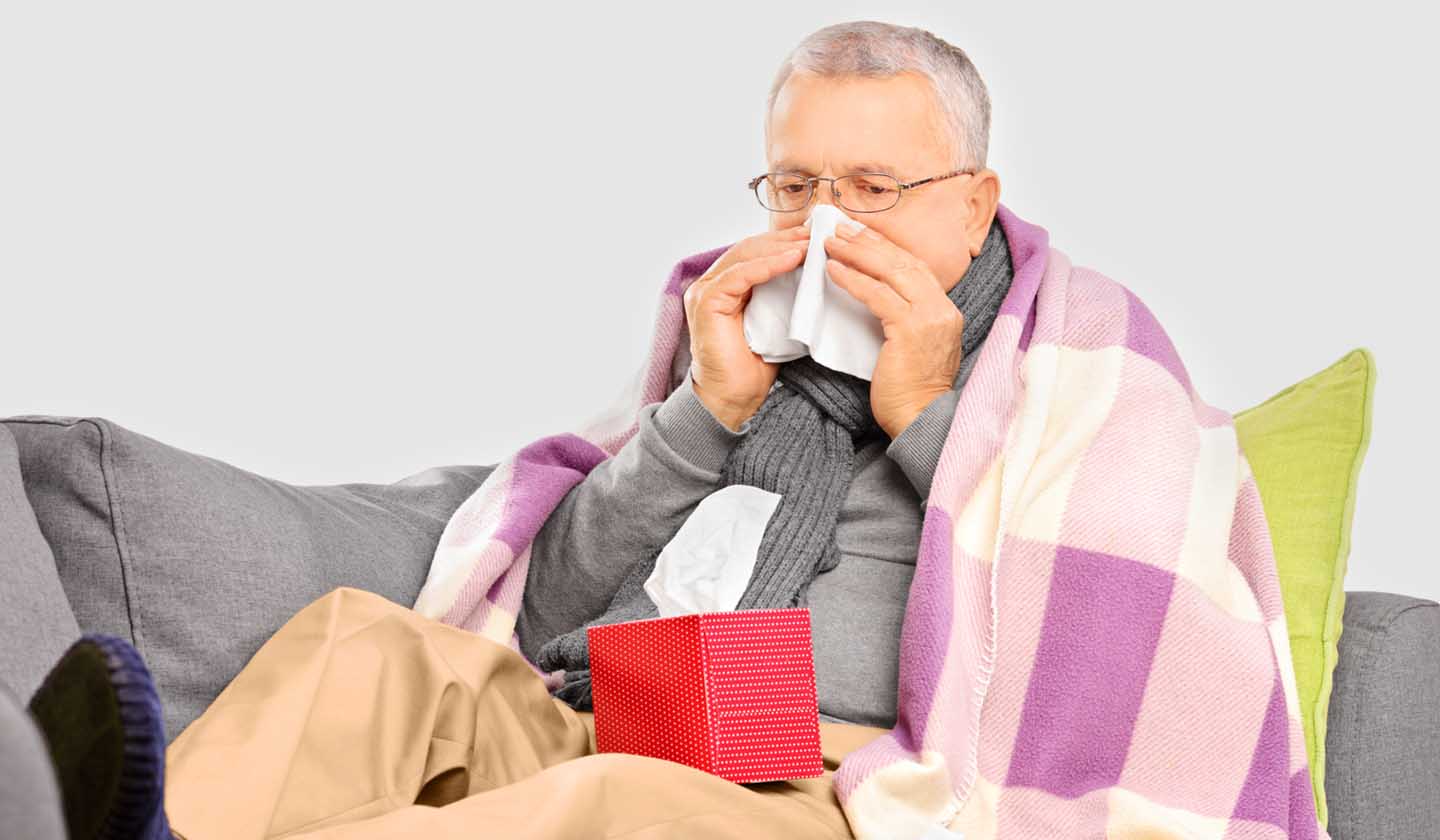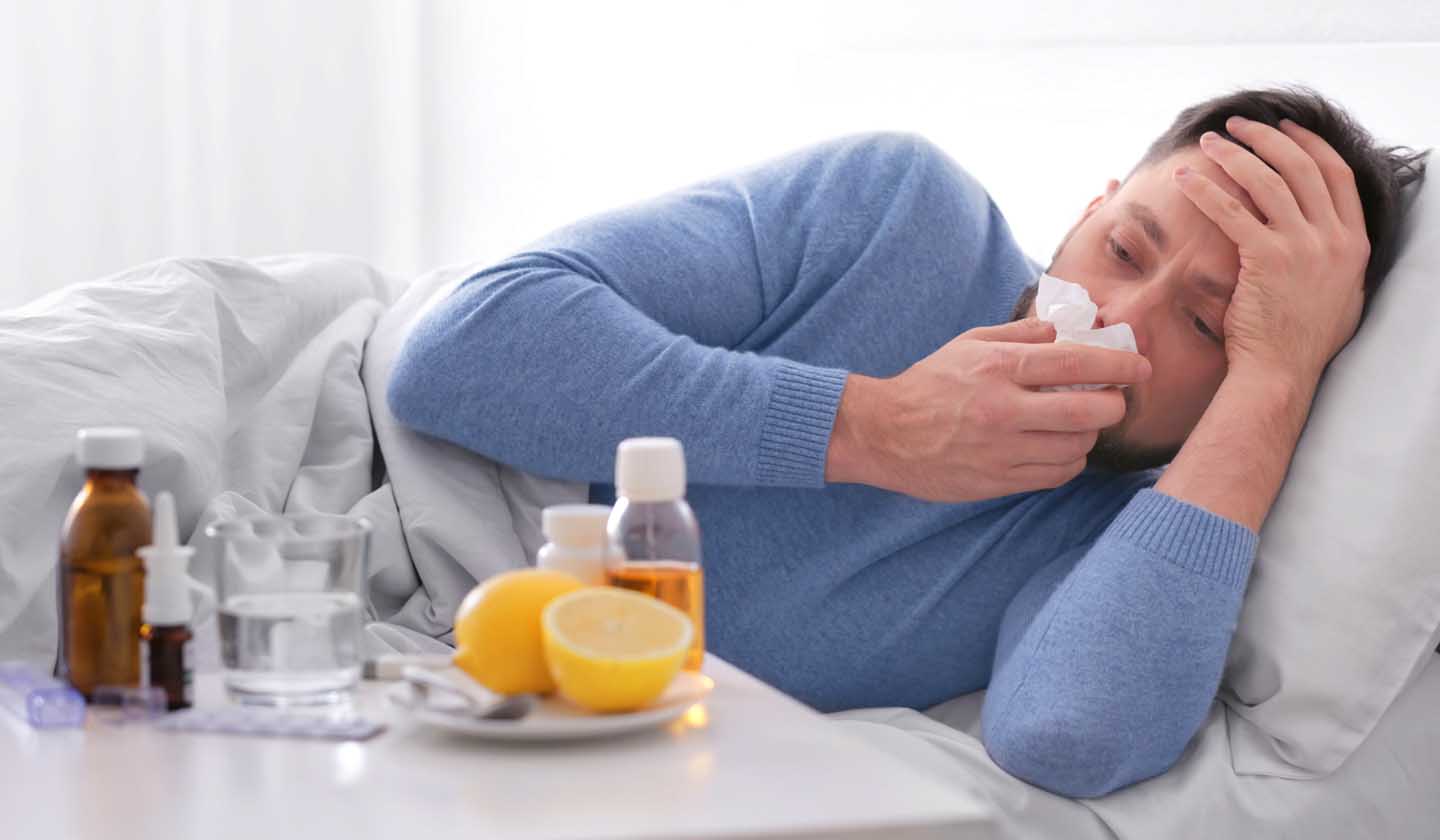Respiratory system
Swine Flu

Type A influenza is a disease caused by the H1N1 virus, which belongs to the family of influenza viruses.
Given that type A influenza has spread on a much higher scale than seasonal influenza, this variant of the influenza virus was considered more dangerous, thus originating a pandemic in 2009.
An epidemic occurs when the cases of a certain disease, in this case, influenza A, occur in greater numbers than expected in a community or region or during a season. When an epidemic spread worldwide, it is called a pandemic.
New flu vaccines are released every year to keep up with rapidly adapting flu viruses. This vaccine composition considers the virus strains that are likely to become active in that particular year. After 2009, one of the strains included in the seasonal flu vaccine is H1N1.
The incubation period, that is, the number of days between the moment a person becomes infected and the moment the symptoms start to show, varies between 1 and 7 days.
Type A influenza symptoms
The symptoms are similar to those observed in another common flu, sometimes occurring with greater intensity.
- High fever - above 38ºC
- Muscle and joint pain
- Chills
- Fatigue
- Cough
- Phlegm
- Nasal congestion
- Sore throat
- Gastrointestinal disorder - vomiting and diarrhoea

Groups of risk
- People over 65 years of age, especially those living in nursing homes.
- Children under the age of 2
- Pregnant women - between the 2nd and 3rd trimester
- Puerperal women - up to 2 weeks after delivery
- People with chronic respiratory diseases - asthma, bronchitis, pulmonary emphysema
- People with heart problems
- Kidney patients
- Diabetics
- Immunocompromised patients
Recommendations to prevent transmission.
- Wash your hands regularly, avoiding contact with your eyes, mouth, and nose.
- When you cough or sneeze, cover your mouth and nose with a tissue, and then throw it in the trash. If you do not have a handkerchief at hand, sneeze, or cough into your elbow-fold area, avoiding your hands.
- If contact with other people is necessary, use a certified mask for this purpose.
- Avoid going to places with large crowds.
- If you have any symptoms, stay home.
Treatment
If there is no other complication, Type A Flu is self-limiting and disappears in a few days.
The measures to be taken are the same used to treat a common cold, that is, symptom relief.
- Fever, muscle pain - use paracetamol to help lower the fever and relieve body aches. Drink plenty of fluids to avoid dehydration.
- Nasal congestion - apply sea water, saline solution, and nasal decongestants.
- Sore throat - sucking on lozenges to relieve the sensation of irritated throat.
- Cough - use cough syrup or honey.
When the fever does not come down or the frequency is less than 4 hours and the symptoms do not improve, medical advice should be sought.

Preventing flu
- Vaccination - flu can be prevented through annual vaccination. If you belong to a risk group or get the flu every year, you should talk to your doctor in order to get a seasonal vaccine medical prescription.
- Food supplements - taking food supplements rich in vitamin C can also be beneficial, as they help to strengthen the immune system.
- Diet - eat fruits rich in vitamin C (citrus fruits, kiwi, strawberries). There are also vegetables that are rich in vitamin C, however the cooking process can alter a food's vitamin content.
- Avoid risky behaviours - avoid stuffy environments with crows or people who may be sick, such as hospitals. Wash your hands regularly.
Flu viruses have a great capacity for mutation, that is, they manage to change their constitution and thus go unnoticed by our immune system. Due to this ability, you should be vaccinated with the new flu vaccine every year since the ones taken previously may not be effective against the new strains of the virus.
Sources
iSaúde
Farmácia Distribuição Magazine
Também lhe poderá interessar
Prevention






